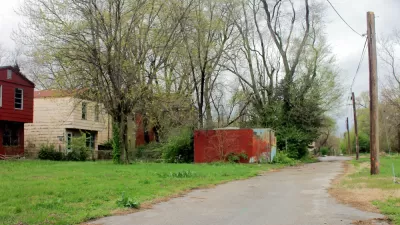The U.S. Census Bureau has released a new set of formulae that dramatically change the way poverty is determined in the U.S., leaving behind the one-size-fits-all approach in use since the 1960s.
The new formulae create eight different ways to measure poverty, based on actual living expenses, the impact of anti-poverty measures like welfare and the rising costs of medical care. The new measures are experimental, and will not immediately replace the 1960s-era measurement.
"Under a complex series of eight alternative measurements, the Census Bureau calculated that in 2009, the number of Americans living in poverty could have been as few as 39 million or as many as almost 53 million. Under the official calculation, the census estimated that about 44 million were subsisting on incomes below the poverty line of about $21,750 for a family of four. The alternatives generally set the poverty threshold higher, as much as $29,600 for a couple with two children.
In September, the census estimated the nation's poverty rate in 2009 was 14.3 percent. Under the alternatives, it could have been as low as 12.8 percent or as high as 17.1 percent."
FULL STORY: Census Bureau releases alternative measures of poverty

Alabama: Trump Terminates Settlements for Black Communities Harmed By Raw Sewage
Trump deemed the landmark civil rights agreement “illegal DEI and environmental justice policy.”

Planetizen Federal Action Tracker
A weekly monitor of how Trump’s orders and actions are impacting planners and planning in America.

The 120 Year Old Tiny Home Villages That Sheltered San Francisco’s Earthquake Refugees
More than a century ago, San Francisco mobilized to house thousands of residents displaced by the 1906 earthquake. Could their strategy offer a model for the present?

In Both Crashes and Crime, Public Transportation is Far Safer than Driving
Contrary to popular assumptions, public transportation has far lower crash and crime rates than automobile travel. For safer communities, improve and encourage transit travel.

Report: Zoning Reforms Should Complement Nashville’s Ambitious Transit Plan
Without reform, restrictive zoning codes will limit the impact of the city’s planned transit expansion and could exclude some of the residents who depend on transit the most.

Judge Orders Release of Frozen IRA, IIJA Funding
The decision is a victory for environmental groups who charged that freezing funds for critical infrastructure and disaster response programs caused “real and irreparable harm” to communities.
Urban Design for Planners 1: Software Tools
This six-course series explores essential urban design concepts using open source software and equips planners with the tools they need to participate fully in the urban design process.
Planning for Universal Design
Learn the tools for implementing Universal Design in planning regulations.
Clanton & Associates, Inc.
Jessamine County Fiscal Court
Institute for Housing and Urban Development Studies (IHS)
City of Grandview
Harvard GSD Executive Education
Toledo-Lucas County Plan Commissions
Salt Lake City
NYU Wagner Graduate School of Public Service



























